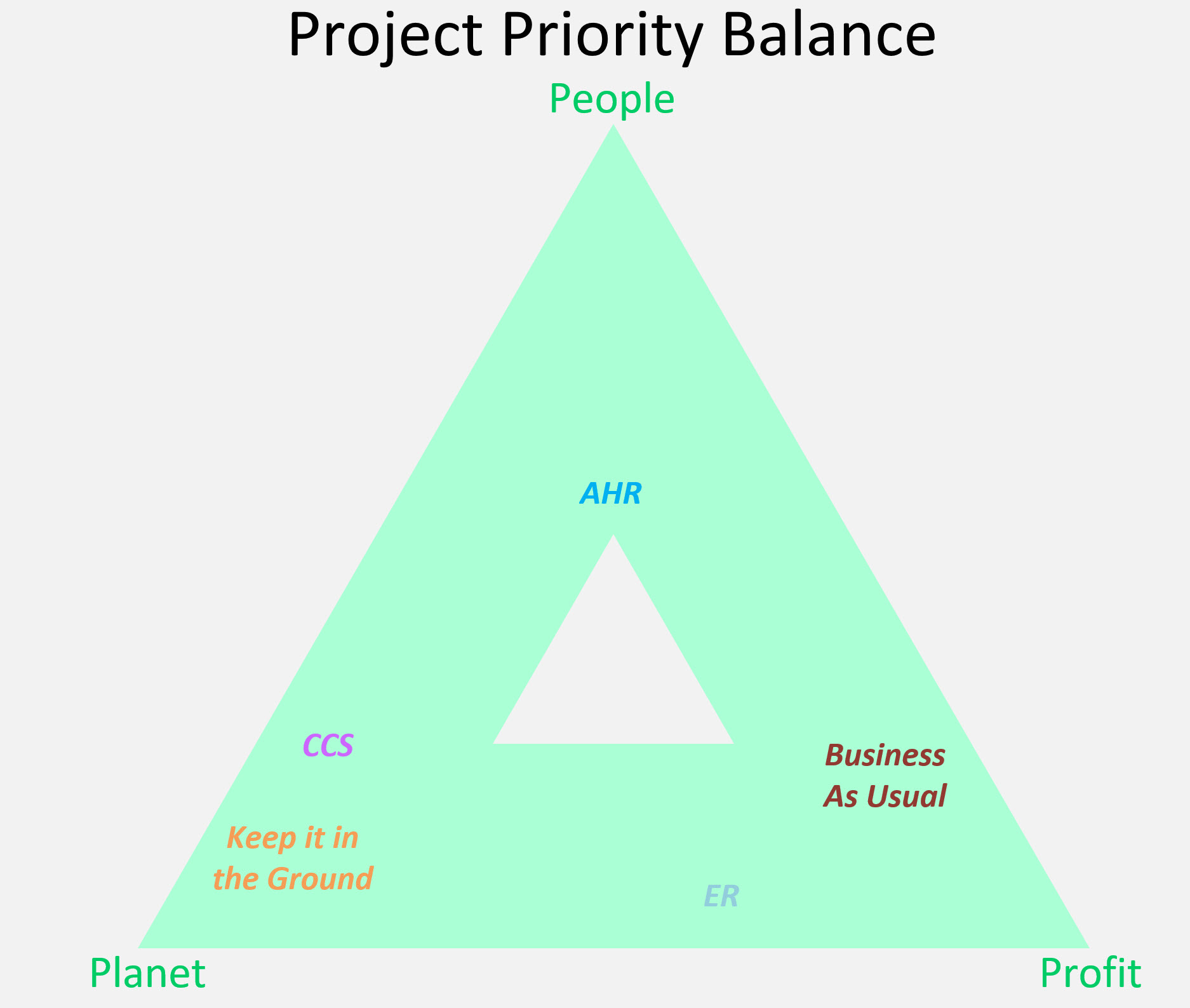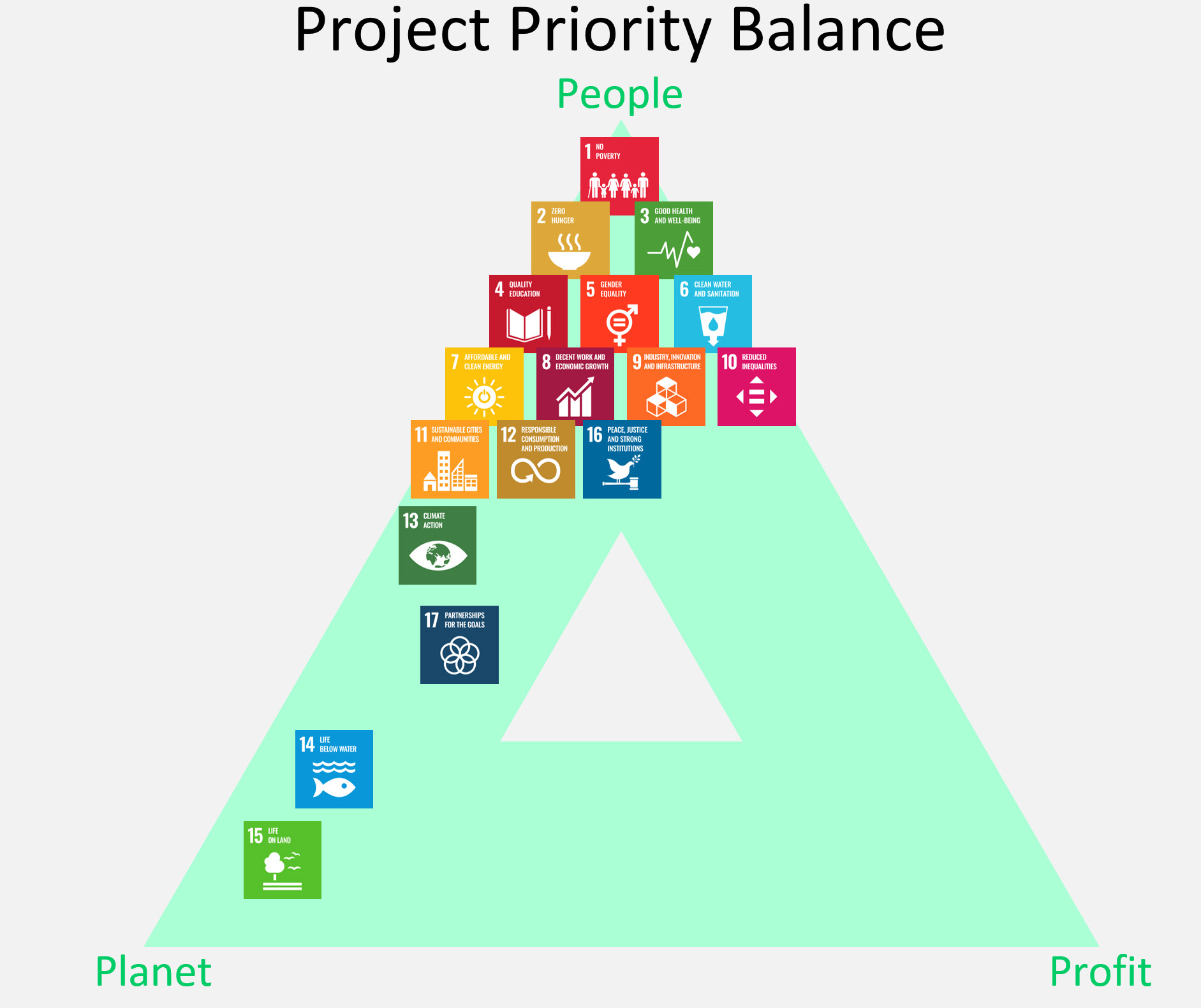By Larry Danberger October 20, 2023
Projects and Initiatives (‘Global Warming’, ‘Climate’, ‘Environment’, ‘Business’ etc.) can be viewed as having a balance of 3 pulling priorities: ‘People’, ‘Planet’, and ‘Profit’.
People: The primary benefit is the immediate comfort of the people involved.
Planet: The primary benefit is to the planet and environment; the comfort of people is secondary.
Profit: The primary goal is making money – for the person, business, or country involved. Power may also be included in this category.

With ‘Business As Usual’, typical businesses exist to generate a profit, with an obligation to the shareholders to have this as their highest priority. How business is conducted is slowly evolving such as with the addition of Environmental, Social, and Governance (ESG) ratings and perspectives. ESG ratings and guidelines provide soft approaches to pressure organizations to think beyond profit, by measuring other aspects and making these metrics publicly available for investors and consumers to review. The products developed must by necessity be desired by the people, otherwise the business will not stay in existence. What is good for the planet takes lowest priority.
With the ‘Keep it in the Ground’ mindset, pressure is mounted or followed to eliminate fossil fuel extraction and production. The planet is (arguably) put as highest priority, with the impact to people (their lively hood, comfort, survival) being a lower priority. Profitability is not a consideration for many proponents, as these efforts are paid for by taxpayers and non-business entities.
With ‘Emissions Reduction (ER)’ efforts, we see energy production being optimized for a result of lower CO2e emissions, and/or techniques to reduce existing CO2e through efforts such as planting trees. The second (after ‘Keep it in the Ground’) darling of the environmental action groups, ER places high reliance on rising CO2e being the actual cause of global warming – which is in dispute by reputable scientists. Governments have tied ER to incentive systems to promise hope while finding funding for their desired programs and to encourage/force this general direction, regardless of its effectiveness. With its direct impact on existing business processes (extraction etc.) and the incentives offered by governments, there is a direct tie to the profitability of existing schemes. Visibility towards improving the planet is critical for voter support, while the third priority of what it actually delivers for the people is placed as a distant third priority – for example the disruption and destruction caused with impunity.
‘Carbon Capture and Storage’ efforts could be considered an ER effort though the emissions are being stored for later release, so really isn’t a reduction but more of a delay. The artificial systems being created have no direct impact on existing systems and industries, and have a high cost (compared to the other solutions). Profit is not the primary driver, instead the highest priority is the planet (reducing the CO2e levels) with the convenience factor of no direct impact on the livelyhoods of the people. These are credit-based systems often paid largely by the tax payers directly or indirectly, profit is not the high priority.
‘Atmospheric Heat Reduction (AHR)’ ignores the controversy around CO2e and reduces the heat directly, a balance that improves the planet somewhat while more importantly improving the environment for human survival, while having a minimal cost as a node towards profit. It is the initiative with the highest balance to date, though putting the comfort of people first. Reversing the heat that is rising due to human activities is more important than profit, which becomes very clear when considering that these activities are 100% additional and not otherwise happening as part of business activities. All the solutions are intended to address global warming, though only AHR reduces the warming directly, the rest will take decades or centuries to have any impact on the atmospheric heat.
Many other initiatives exist. For example, flood (due to human-caused climate change) mitigation would have ‘People’ as its highest priority, with no consideration towards ‘Profit’ or ‘Planet’. If we consider the UN Sustainable Development Goals, we can see a cluster around ‘People’, as would be expected. Two are primarily focused on ‘Planet’. The Climate group is not really about the planet, the focus appears primarily about adapting to climate change for human survival. None are about profit nor improving businesses / governments around the world, though some would argue that power over organizations and the wealth redistribution across countries is the true driver which if true would reposition all the initiatives to ‘Profit’, which includes power.

Stepping back to understand the goals and priorities of each project help us focus attention and resources where it best aligns with our own drivers. It also helps us understand the priorities and actions of others, why we can’t all just get along. An environmental protestor whose priorities are in the order of Planet, People, Profit will find conflict with those charged with the business responsibilities in order of Profit, People, Planet. Socialist groups will obviously place People first.
Emphasis of any one to the exclusion of others will result in disaster in the bigger picture. Socialist approaches need to be funded. Capitalism requires content consumers and a world to live in. Naturalists require funding and the fruits of industry and science, otherwise have very short lives.
Each of these efforts has their place and balance level, the solution is not one of them but all of them together.
IMHO

